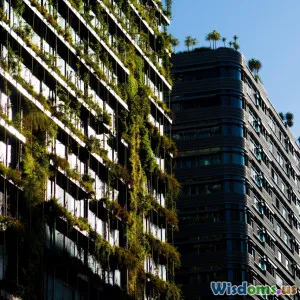
The Power of Green Spaces for Health
7 min read Discover how green spaces profoundly improve physical, mental, and social health for urban living. (0 Reviews)
The Power of Green Spaces for Health
Introduction
Imagine a simple walk through a lush park, the calming rustle of leaves, birdsong overhead, and soothing fresh air filling your lungs. Such experiences in green spaces are far more than just pleasant escapes; mounting evidence shows these environments serve as critical sanctuaries for our physical, mental, and social health. Across the globe, as urban areas expand and lifestyles become increasingly sedentary and screen-based, green spaces offer a powerful counterbalance. This article delves deeply into how access to nature improves our well-being and why it should be a cornerstone of public health policy and personal lifestyle choices.
Physical Health Benefits of Green Spaces
Promoting Physical Activity
One of the most direct impacts of green spaces is fostering physical movement. Parks, trails, and gardens encourage walking, jogging, cycling, and other outdoor activities that combat sedentary lifestyles. For example, a study published in The Lancet Global Health found that people living near green spaces are up to 40% more likely to meet recommended physical activity guidelines. This translates to better cardiovascular health, weight management, and lower risk of chronic diseases like diabetes.
Case Study: The introduction of pocket parks in New York City’s boroughs saw a marked increase in local residents’ physical activity rates, especially among children and elderly populations, according to municipal health reports.
Enhancing Immune System and Reducing Pollution Exposure
Green spaces improve air quality by filtering pollutants and producing oxygen, which directly benefits respiratory health. Studies have also shown that spending time in nature exposes individuals to diverse microbiomes, which can boost immune function. Japanese researchers coined the term 'Shinrin-yoku' or 'forest bathing,' demonstrating how immersion in forests lowers inflammation markers and strengthens the immune system.
Mental Health and Cognitive Benefits
Stress Reduction and Mood Enhancement
Natural surroundings have a profound effect on mental well-being. Access to green environments lowers cortisol levels—a key stress hormone—thus reducing anxiety and depression symptoms. The American Psychological Association reports that patients experiencing exposure to nature have faster recovery rates from mental health challenges.
Improved Attention and Cognitive Function
Green spaces not only refresh the mind but can restore concentration. The Attention Restoration Theory posits that natural environments allow the brain to relax and recover from the fatigue induced by urban stimuli. A University of Michigan study showed students who walked in a park outperformed peers who took urban walks on attention-related tasks.
Combating Mental Fatigue and Enhancing Creativity
Beyond attention, nature enhances creative thinking by fostering relaxed, open states of mind. Many artists, writers, and innovators draw inspiration from natural settings—Steve Jobs famously retreated to walks in the apple orchards to unlock creativity ideas.
Social and Community Health
Fostering Community Cohesion
Green spaces act as communal hubs where social bonds form and flourish. Shared gardens, playgrounds, and greenways offer informal meeting places encouraging social interaction, reducing feelings of isolation.
Insight: Research from the University of Exeter revealed that neighborhoods with more green spaces report higher levels of social cohesion and lower crime rates.
Equity in Health Access
Urban planning that incorporates equitable green space distribution confronts health disparities. Low-income and marginalized communities often lack accessible parks, contributing to poorer health outcomes. Addressing this inequity is critical in promoting holistic community health.
Practical Steps to Harness the Power of Green Spaces
Urban Planning and Policy Implications
City planners must prioritize integrating green areas within residential and commercial districts. Examples like Singapore’s ‘City in a Garden’ initiative demonstrate how green infrastructure boosts quality of life alongside economic growth.
Personal Lifestyle Integration
Individuals can benefit by incorporating simple habits: morning park walks, gardening, or periodic digital detoxes in nature. Employers encouraging outdoor breaks have also noticed increased employee productivity and satisfaction.
Leveraging Technology to Connect with Nature
New apps enable users to locate nearby green spaces, plan hikes, or engage in natural mindfulness exercises, making nature more accessible even to busy urbanites.
Conclusion
In an era dominated by urban sprawl and digital saturation, green spaces emerge as vital oases of health and vitality. Their multifaceted benefits—spanning physical restoration, mental clarity, and social enrichments—are supported by a growing body of interdisciplinary research. Investing in more and better-accessible green spaces is not a luxury but a necessity for sustainable, healthy living. By embracing nature’s healing potential, individuals and societies can foster resilience, joy, and longevity. So, next time you have the opportunity, step outside—into the greenery—and let nature be your medicine.
"Green space is the collective health of our cities, the lungs and heartbeat of communities where physical and mental wellness grow." — Urban Health Advocate
Rate the Post
User Reviews
Popular Posts





















